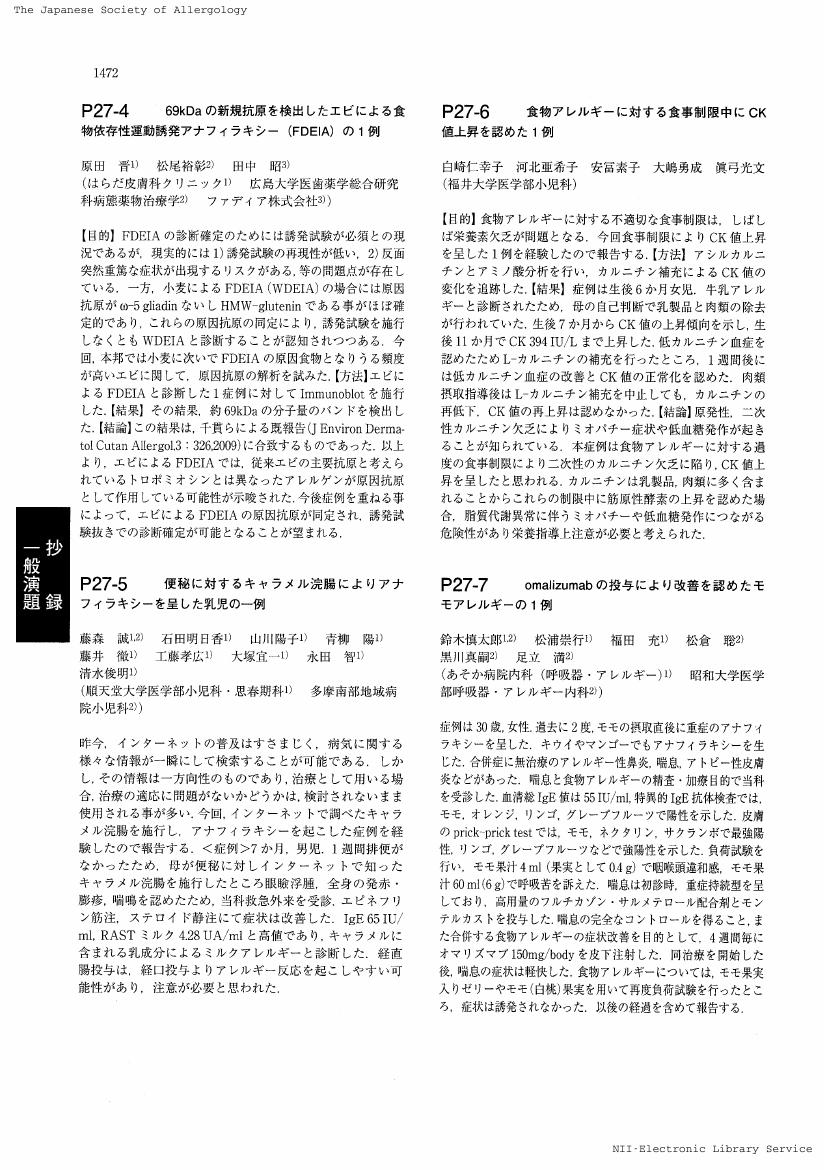1 0 0 0 OA 差異表現に基づくピクトグラムの主題提示と認識向上
- 著者
- 藤森 誠 伊藤 一成 DÜRST Martin J. 橋田 浩一
- 出版者
- 日本感性工学会
- 雑誌
- 日本感性工学会論文誌 (ISSN:18845258)
- 巻号頁・発行日
- vol.8, no.3, pp.575-583, 2009-02-28 (Released:2016-01-25)
- 参考文献数
- 12
- 被引用文献数
- 1
Pictograms are graphic symbols also called picture symbols. They are widely used, mainly in public accommodations. However, it is hard to say that meaning can be grasped quickly from a single pictogram. In most cases, pictograms are accompanied by some explanatory written text. In this paper, we propose a new method of displaying pictograms, displaying two slightly different pictograms successively, using the difference between the two frames to promote understanding. We limit ourselves to two frames because a higher number of pictograms makes it difficult to clearly express difference information and risks to confuse viewers more than help understanding. We experimentally evaluated the recognition properties of our new method. We showed one-frame and two-frame versions expressing the same content to 165 subjects and measured action time, percentage of correct answers, and semantic transparency. Using a Mann-Whitney U test, we found that in some problems, the semantic transparency was significantly (p < 0.05) higher for two-frame pictograms than for one-frame pictograms. Also, two-frame pictograms generally showed a better percentage of correct answers. We conclude that two-frame pictograms making use of difference information may contribute significantly to increasing pictogram recognition.
1 0 0 0 差異表現に基づくピクトグラムの主題提示と認識向上
- 著者
- 藤森 誠 伊藤 一成 DÜRST Martin J. 橋田 浩一
- 出版者
- 日本感性工学会
- 雑誌
- 日本感性工学会論文誌 (ISSN:18828930)
- 巻号頁・発行日
- vol.8, no.3, pp.575-583, 2009
- 被引用文献数
- 1
Pictograms are graphic symbols also called picture symbols. They are widely used, mainly in public accommodations. However, it is hard to say that meaning can be grasped quickly from a single pictogram. In most cases, pictograms are accompanied by some explanatory written text. In this paper, we propose a new method of displaying pictograms, displaying two slightly different pictograms successively, using the difference between the two frames to promote understanding. We limit ourselves to two frames because a higher number of pictograms makes it difficult to clearly express difference information and risks to confuse viewers more than help understanding. We experimentally evaluated the recognition properties of our new method. We showed one-frame and two-frame versions expressing the same content to 165 subjects and measured action time, percentage of correct answers, and semantic transparency. Using a Mann-Whitney U test, we found that in some problems, the semantic transparency was significantly (p < 0.05) higher for two-frame pictograms than for one-frame pictograms. Also, two-frame pictograms generally showed a better percentage of correct answers. We conclude that two-frame pictograms making use of difference information may contribute significantly to increasing pictogram recognition.
1 0 0 0 ピクトグラムの群配置における感性的認識に関する検証
- 著者
- 藤森 誠 伊藤 一成 DÜRST Martin J. 橋田 浩一
- 出版者
- 日本感性工学会
- 雑誌
- 日本感性工学会論文誌 (ISSN:18828930)
- 巻号頁・発行日
- vol.8, no.1, pp.113-118, 2008
- 被引用文献数
- 1
Recently, t here is a lot of attentiona nd researcho n using pictogramsa sa communicationm ethod. In ordert o express sentence-levelc onceptsw ith pictograms, i t is necessaryt o combine several pictograms. Traditionally, t his is done using a linear layout. However, this requires guessing of the overall meaning from the meaning of the individual pictograms. Therefore, we have proposedt w o-dimensionapl ictograma rrangements(called Picture Text), w hich we expectt o easier to understand. In this paper, we report on an experimenitn vestigatingw hethert his is indeedt he case.<BR>The experiment used pairwise comparison of five methods of expression: written text, illustrations, photographs, linear pictogram layouts, and Picture Text. Besides the rate of correct answers, we also obtained an estimate for the degree of intuition directly from the subjects. Using a t-test, we found that the degree of intuition differeds ignificantly(p<0.05)betweenl inear pictograml ayouts and other methodso f expression. The more than one hundred subjectsr anged from childrent o people in their seventies. Children from a school for the disable formed a separate group of subjects. We discuss the effect of variables such as age.<BR>In conclusionw, e can say that Picture Text is clearlys uperiort o linear pictograml ayouts, a nd is on par with writtent ext, i llustrations, and photographsw hen communicatingse ntence-levecl oncepts. Picture Text is therefores uitablea s a new mediumo f expressiona nd communication.
